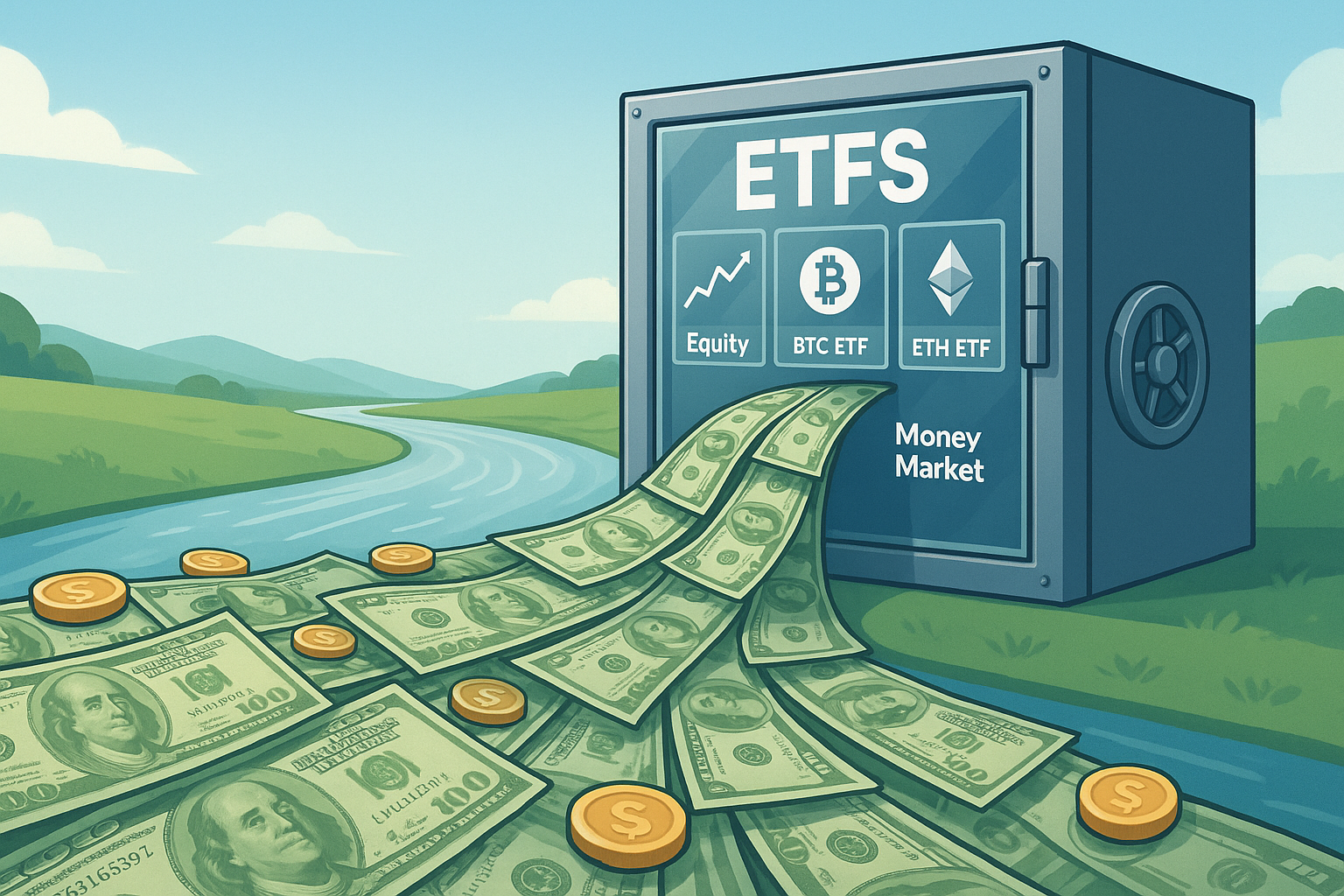Money is moving. A lot of money.
July saw a staggering $116 billion flow into U.S.-listed ETFs, making it 2023's strongest month yet and putting the industry on track for a second consecutive trillion-dollar year. Yes, trillion with a T.
I've been covering financial markets for over a decade, and I still remember when hitting $10 billion in a fund was headline news. Now we're watching the industry casually absorb a trillion dollars annually, and the collective response is basically a shrug and a "seems about right."
Where's all this cash going? U.S. equity ETFs led the charge with $52 billion in inflows, which makes perfect sense given the S&P 500 and Nasdaq's relentless march to new highs. The AI narrative—that comfortable bedtime story the market keeps telling itself—continues to drive investor enthusiasm.
But here's the thing that caught my eye: Vanguard's S&P 500 ETF (VOO) alone pulled in $12.5 billion in July. Just one month! It's already collected $72.6 billion this year and seems destined for another $100 billion-plus annual haul. This isn't just passive investing—it's passive investing at industrial scale, like millions of investors collectively throwing up their hands and saying, "Just put it in the market, I guess."
The Crypto ETF Paradox
Meanwhile, crypto ETFs are having themselves a moment. The iShares Bitcoin Trust (IBIT) claimed second place with $5.3 billion in July inflows, while its Ethereum counterpart (ETHA) gathered $4.2 billion.
Isn't there something wonderfully ironic about this? Cryptocurrency—created specifically to bypass traditional financial plumbing—is now being enthusiastically embraced through the most conventional investment vehicle Wall Street offers. Bitcoin hit $120,000 in July, and how did investors respond? By... filing into a BlackRock product.
So much for financial revolution. Turns out it will be securitized after all.
When I talk to crypto enthusiasts (and trust me, I've spoken to plenty), they often miss what I call "the normalization paradox." The more exotic the underlying asset, the more conventional the wrapper investors prefer. Bitcoin feeling too wild? No problem—access it through a regulated ETF with a familiar ticker symbol and a PDF prospectus. Our financial system has an uncanny talent for domesticating even the most exotic financial creatures.
Cash Isn't Trash (Yet)
The other interesting wrinkle in July's data: strong inflows to money market ETFs like Simplify's SBIL and iShares' SGOV. With the Fed starting its rate-cutting cycle, you'd think money would be fleeing these vehicles. Instead, investors are still parking cash there.
Look, at 4.75%, money market yields still offer reasonable compensation for sitting on the sidelines. The market seems to be saying, "I'll keep some powder dry, thanks very much."
I've been watching this pattern develop since early spring. It's what I think of as the "barbell of conviction." On one end, investors express extremely high conviction (pouring money into AI-driven tech stocks and crypto), while on the other, they maintain substantial cash positions. It's not necessarily contradictory—just a rational response to a market where the dominant narrative feels strong but the possibility of a major shift looms just over the horizon.
The Death of Active Management (Still in Progress)
The broader trend here—one I've documented for years—remains the relentless shift toward passive investing. If ETFs collect another trillion dollars this year, that's a trillion dollars essentially voting against active management.
I was talking with a portfolio manager last week (who, understandably, asked not to be named), who called it "death by a thousand basis points." Harsh, but not entirely wrong.
There's a problem in markets that doesn't get enough attention: the "too much money" problem. When capital is abundant, the real challenge becomes finding sensible places to put it. ETFs solve this elegantly—offering instant diversification, liquidity, tax efficiency, and increasingly, microscopically small fees. Money, like water, naturally flows along the path of least resistance.
Will we ever hit peak ETF? I doubt it. The structure itself is too damn clever, too flexible. What we're witnessing isn't just a product cycle but a fundamental rewiring of how investment exposure gets delivered. The ETF is to mutual funds what streaming is to cable TV—a superior delivery mechanism that, once experienced, makes the old way seem clunky and overpriced.
So July's $116 billion inflow? Just another mile marker on a very long highway. The journey continues, the vehicles keep improving, and money—so much money—keeps finding its way home.
